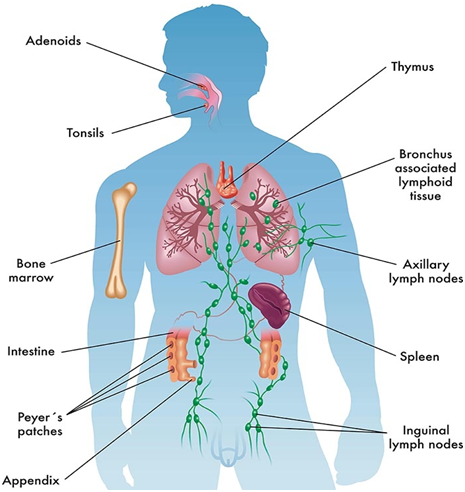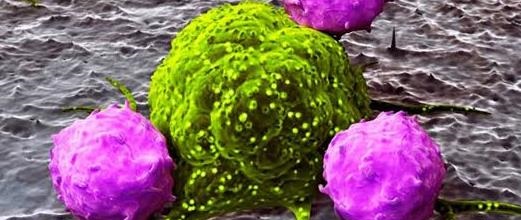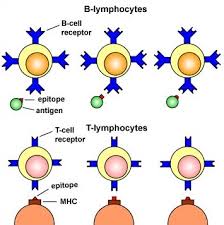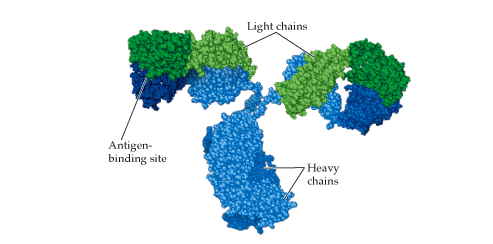Immunology is simply defined as the study of how the immune system of a living organism functions in either a disease condition or a healthy state. It is the study of how an organism responds to foreign bodies (antigens) that it comes in contact with in the environment, and its differentiation from the body’s own self. The immune system is generally a complex system of network of cells, tissues and organs and cell products (e.g. antibodies and cytokines) which work cooperatively to protect the body from invading pathogenic microorganisms and the disease/infection that they cause.
Susceptible individuals can be immunized through the process of immunization or vaccination, a process of injecting a person with an antiserum or immune system booster (e.g. vaccines) in order to give the body immunity or protection from an infection or infectious disease agent. The phrase immunology also encompasses all the biological, chemical, and physical properties of an organism’s immune system that help it to fight against infectious diseases. In other words, immunology deals basically with the study of our body’s protection from foreign agents or antigens (inclusive of pathogenic microorganisms) that invade the host’s body to cause infection or disease. The environment in which we live is inundated with diverse foreign bodies or macromolecules which are generally termed antigens.
An antigen is a molecule or substance that is foreign to the body (i.e. it is unknown by the host immune system). Molecules which are unfamiliar to the host’s body and which the immune system sees as potential harm are known as non-self while those molecules, cells, tissues and organs that are valid parts of the body are called self. To be functional and active, an immune system must be able to distinguish self–molecules from non-self-molecules. These non-self-molecules are infectious agents or particles that invade the human body and cause disease, and they include virus, fungi, bacteria, parasites/worms or protozoan and every other molecule that should not naturally be found in the human body. The field of immunology has had tremendous success in clinical/human medicine in the area of containing the excesses of infectious diseases, and this can be envisaged in the eradication of some diseases (e.g. smallpox) which used to be a burden to humanity.
Today, there are plethora of vaccines that help to prevent the acquisition and transmission of infectious diseases or their agents within a defined human population through proper immunization/vaccination. Prior to birth, the foetus in the womb of an expectant mother is usually free from microbes or foreign bodies because of the germ-free environment provided by the uterus. But immediately after birth, the newborn becomes bathed with different types of infectious agents including microorganisms that constantly attack the body from childhood to adulthood. As earlier said, mankind live in potentially harsh environment that is packed with different kinds of microorganisms (both pathogenic and non-pathogenic) that can cause disease, but the human body has evolved mechanisms that allows it to evade the excesses of these microbes. This mechanism that helps the host’s body to be free from foreign agents is known as the immune system.
The immune system of a human host helps to establish a germ-free state(known as immunity) against invading microorganisms. Immunity which is derived from the Latin word “immunis” meaning “exempt or freedom from a burden” is a state of the host’s body that is characterized by the body’s ability to remove or counteract any trace of non-self (antigens) that enters the system. An immune state can also be achieved in a human host through immunization – during which the host’s body becomes more responsive and prepared to work against foreign molecules as they come in contact with the body. If truth be told, the science of immunology is centered and built around immunity – since this branch of biomedical science deals with how the host body is being protected (either naturally or artificially) from infectious agents.
The immune system is indeed a significant security of the human host since the immunity it provides helps a great deal to help keep the body safe from the myriad of pathogens that surrounds the environment. This system which learns and recognizes pathogens prior to and after the first attack, has evolved to mass produce cells and molecules with which it uses to eliminate a variety of pathogenic microorganisms. Of particular interest is the ability of a host immune system to produce antibodies and other receptors that are unique and specific for each of the different pathogenic microorganisms that invade the human body.
Antibodies are protein molecules produced by the immune system on exposure to an antigen, and that can combine specifically with foreign molecules. The immune system performs two basic functions in the body and these are: the function of recognition and the function of response. Following the invasion of the body by pathogenic microorganisms, the immune system recognizes these foreign agents (non-self) and differentiates them from one another, and the system also goes further to differentiate the non-self from the body’s own molecules (i.e. self molecules). After doing this, the immune system recruits and engages a variety of immune system cells and molecules (known as effector cells) to specifically respond and eliminates the antigen.
This initial attack of the host body by antigens leaves behind memory cells which help the immune system to recognize similar pathogen in a second attack, and thus direct a more robust and fast immune reaction that get rid of the antigen and prevent the development of an infection in the host. Thus when the body’s immune system develops immunity to a specific antigen or pathogen, it will continue to remain free of infection caused by that particular pathogen for a lifetime. A properly functional immune system is an asset to the body because such functional immune system will constantly police the body for the presence of antigens and other foreign bodies (inclusive of microbial pathogens) in order to different the invading antigens from the host’s self-tissues and cells (Figure 1).

Once identified, the body’s immune system mounts an immunological attack with its associated cells and organs to ward-off and contain the nefarious activities of the invading disease-causing agent. The spleen, white blood cells (WBCs), antibodies, the thymus and the lymph nodes are some of the organs and cells of the immune system that help to protect the body from disease and disease-causing microorganisms. To ward-off antigens and possibly keep pathogenic microorganisms at bay it is critical that the human host maintains a good nutrition and ensures that diets are taking in their balanced forms inclusive of all the necessary nutritional requirements required for normal growth and body development. This is vital because some infectious diseases of man (inclusive of immunodeficiency diseases) have been linked to malnutrition.
Children and the elderly with immature immune systems are often at risk and undernourishment makes these individuals to be more susceptible to infections caused by microbes. Maternal undernourishment could also affect the immune system of the neonates as well as their birth weight and expectant mothers are always advised to maintain good nutrition for both their health and that of the unborn child. And even in a diseased state, the loss of nutrients from the body in some disease conditions (e.g. diarrhea and vomiting) weakens the individual’s immune system and proper replacement or intake of good diet is advisable in such scenarios. Malnourished individuals (especially children and the elderly) have higher morbidity and mortality rates to infectious diseases compared to people who eat well and this also affects the course of infections in the former since their immune system have been impaired from protecting the body against invading pathogenic microorganisms and other disease causing particles or antigens.
REFERENCES
Abbas A.K, Lichtman A.H and Pillai S (2010). Cellular and Molecular Immunology. Sixth edition. Saunders Elsevier Inc, USA.
Actor J (2014). Introductory Immunology. First edition. Academic Press, USA.
Alberts B, Bray D, Johnson A, Lewis J, Raff M, Roberts K and Walter P (1998). Essential Cell Biology: An Introduction to the Molecular Biology of the Cell. Third edition. Garland Publishing Inc., New York.
Bach F and Sachs D (1987). Transplantation immunology. N. Engl. J. Med. 317(8):402-409.
Barrett J.T (1998). Microbiology and Immunology Concepts. Philadelphia, PA: Lippincott-Raven Publishers. USA.
Jaypal V (2007). Fundamentals of Medical Immunology. First edition. Jaypee Brothers Medical Publishers (P) Ltd, New Delhi, India.
John T.J and Samuel R (2000). Herd Immunity and Herd Effect: New Insights and Definitions. European Journal of Epidemiology, 16:601-606.
Levinson W (2010). Review of Medical Microbiology and Immunology. Twelfth edition. The McGraw-Hill Companies, USA.
Roitt I, Brostoff J and Male D (2001). Immunology. Sixth edition. Harcourt Publishers Limited, Spain.
Zon LI (1995). Developmental biology of hematopoiesis. Blood, 86(8): 2876–91.
Discover more from Microbiology Class
Subscribe to get the latest posts sent to your email.




